A Glasgow excursion - the Cycling Embassy AGM's second infrastructure safari
In September the Embassy descended on Glasgow for our AGM. As part of the weekend's events, we were escorted around the city for our traditional Infrastructure Safaris, kindly organised by GoBike. A big thanks to them!
Our second infrastructure safari started at our venue, the Whisky Bond, to the north of the city centre, and would take us out to the west, returning to the centre via the 'Bridge to Nowhere'.
The Whisky Bond lies on a canal, the Forth and Clyde, which has a towpath running alongside it, and we used it to return south towards the city.

The surface of this towpath isn't brilliant - it's composed of a slightly lumpy asphalt - and the towpath itself could be much wider, to reduce conflict between people walking and cycling. There is some clever solar-powered lighting to mark the edges - some intermittent LEDs - but I suspect the path could feel more than a little unsafe at night for solo users, because there isn't any street lighting. All that means that this path probably isn't going to be used as much as it could be.
The canal is - perhaps surprisingly - some height above the city centre, and that means negotiating down to street level. Thankfully there is a zig-zag ramp to take some of the strain out of the gradient (although it is still pretty steep!).
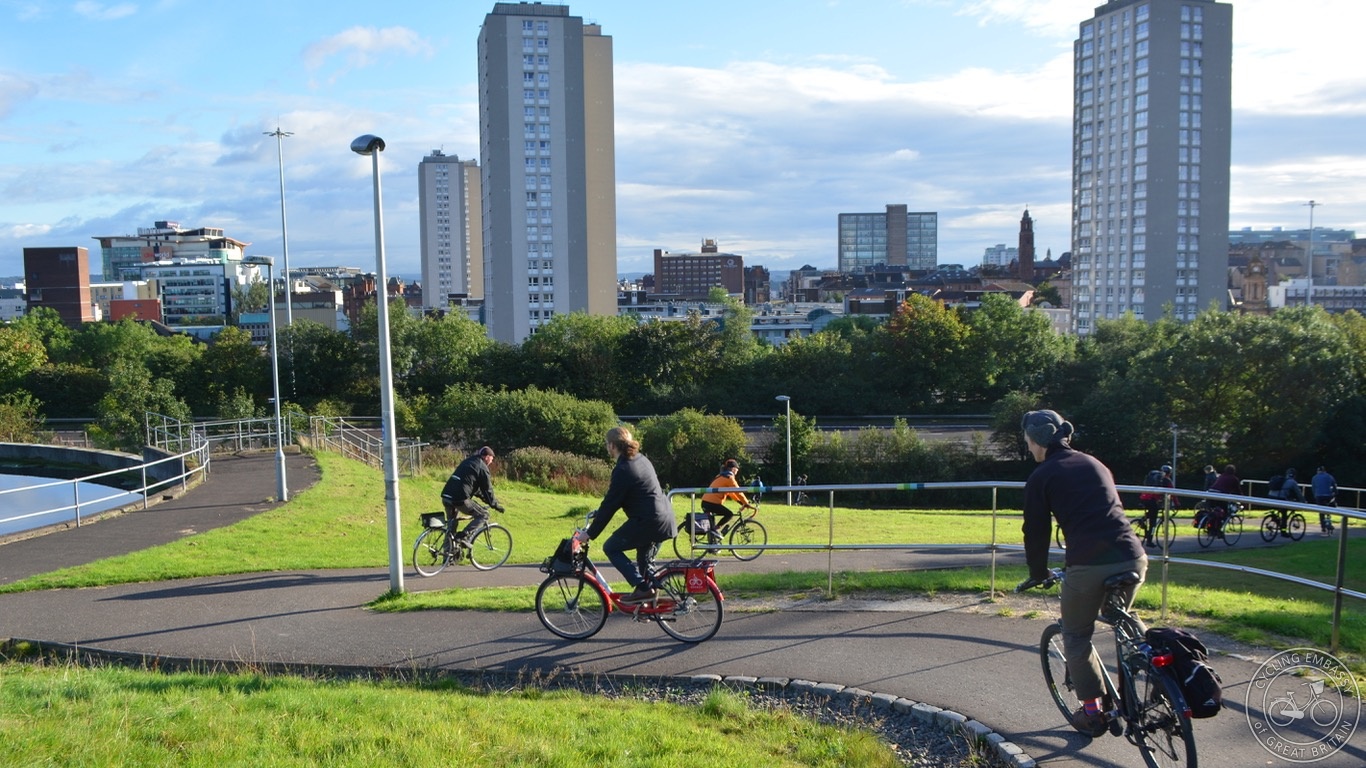
To enter the city centre it is of course necessary to cross the M8 motorway that encloses it. Thankfully there is at least a good cycling and walking underpass here, one that is nice and wide and open, and didn't feel particularly unsafe. In fact, rather than being an 'underpass', this is more of an open area, with the motorway passing overhead on a bridge.
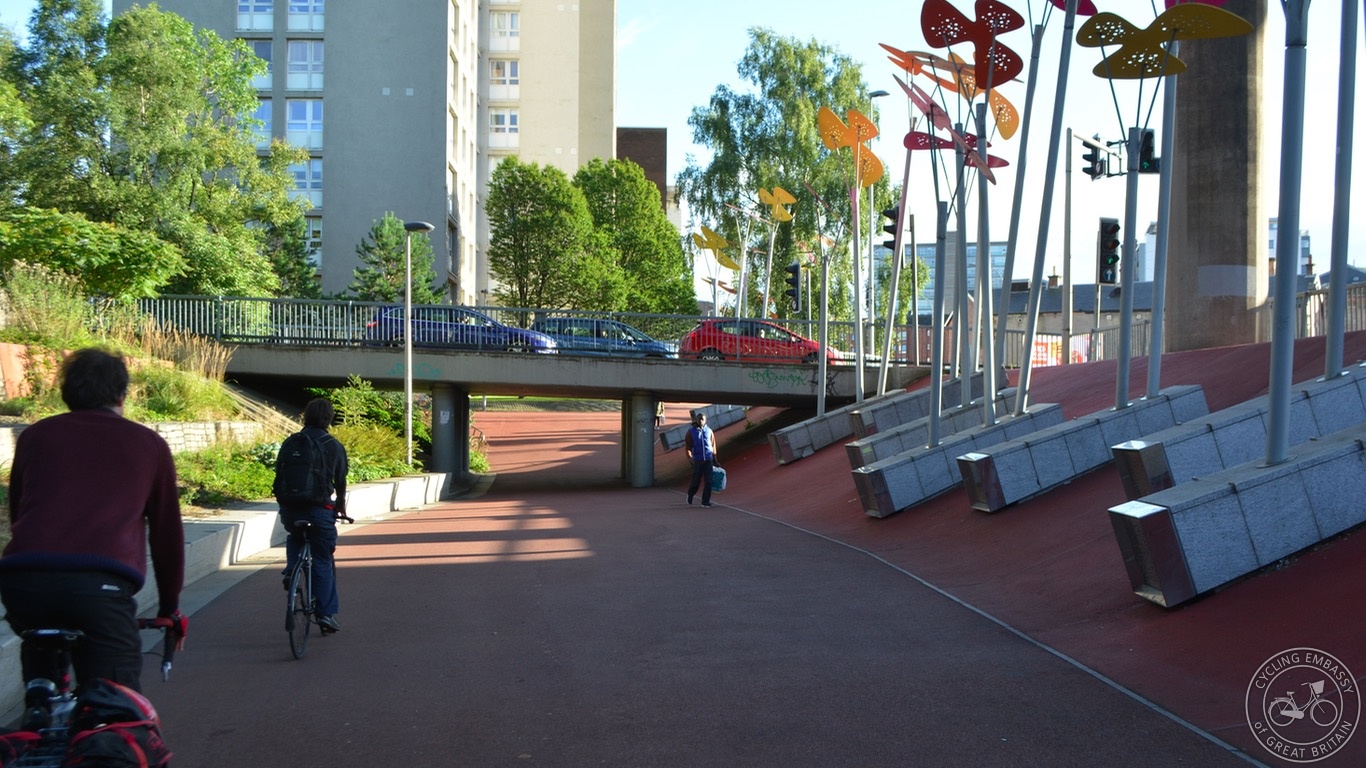
At night this area is well-lit, and also seems to have a reasonable number of people passing through (both on foot, and cycling) at all times. The most serious problem appears to be flooding, and also water splashing down onto people using the path from accumulated puddles on the road above.
Bus stop bypasses - or 'floating' bus stops - are an essential element of cycling infrastructure design on busy roads. Unfortunately they have proven to be slightly controversial, mainly because they are seen as new and unfamiliar. Yet most towns and cities already have them, or something resembling them, and it seems Glasgow is no exception - there is a bus stop bypass that has probably been in use for many years without anyone really noticing it, just to the south of the motorway.

Passing west back under the motorway (there's an awful lot of motorway in Glasgow!) we ended up in an attractive area of filtered streets, closed entirely to through-motor traffic.
The main intervention we passed was an old-looking fire gate, that prohibited motor traffic (via signs) and had a series of fairly sharp ramps, with a cycle bypass on either side. Obviously it's possible to get a fire engine through the middle, and I suspect a determined driver in a 4x4 could get through too, but it seemed to do the job.
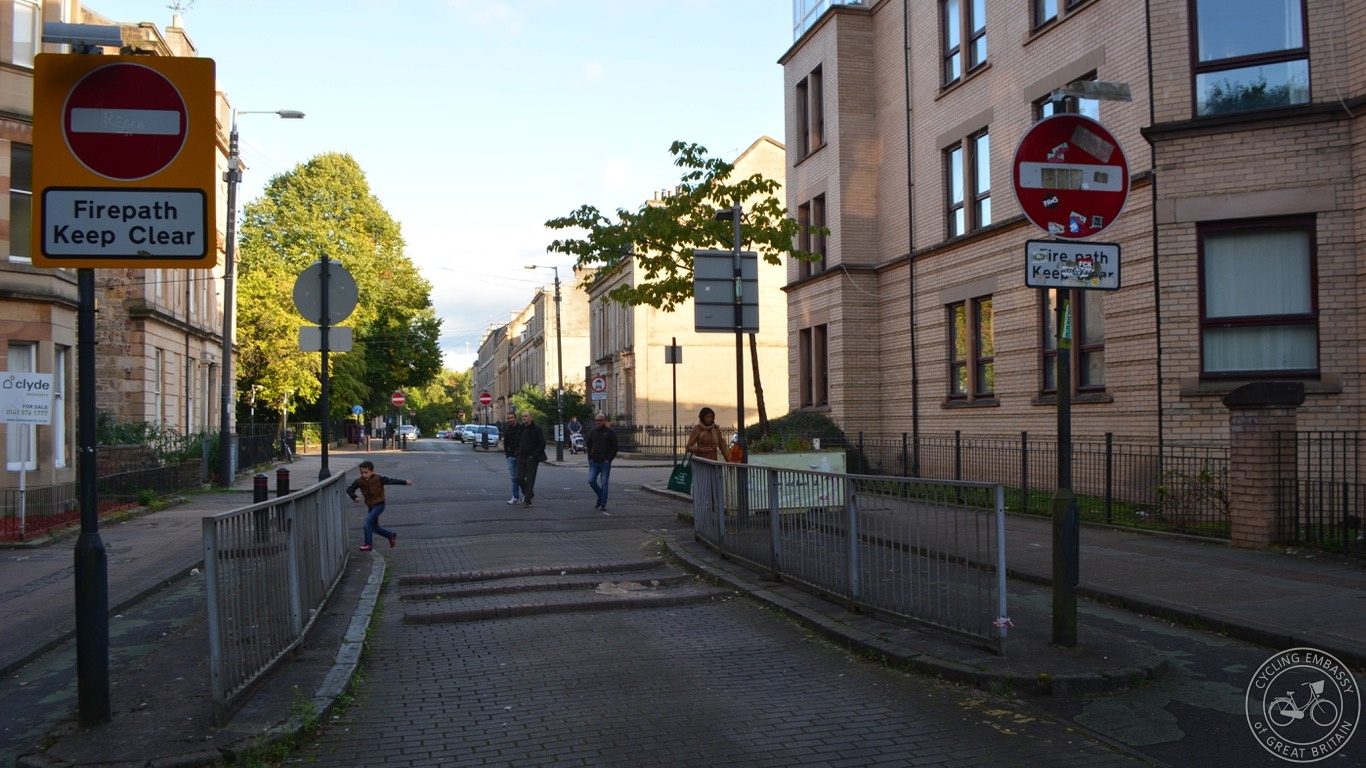
At the other end of the road there was a more conventional - but also old-looking - one-way filter, with cycle exemption, but this could with a bit of a re-design.
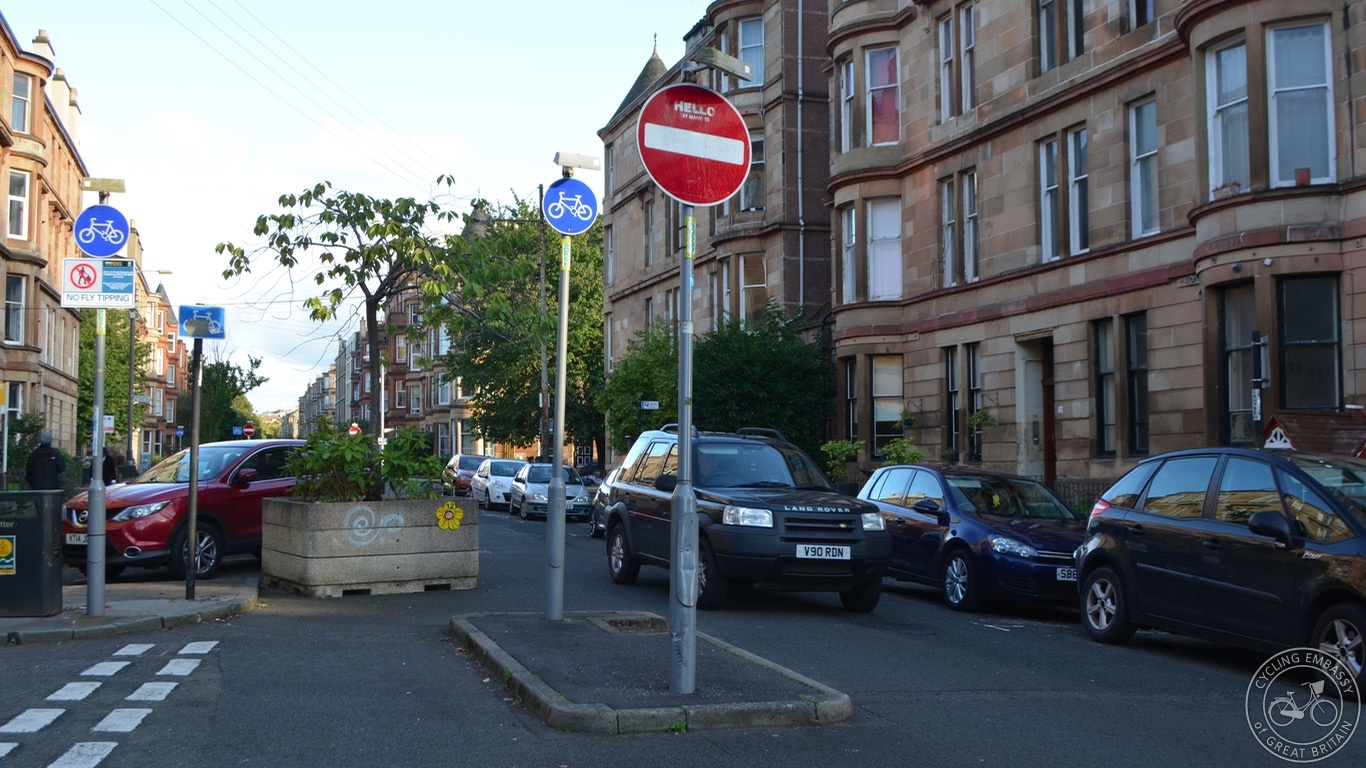
Although we didn't encounter them, it turns out that all the side roads in this area are closed off to motor traffic too, making this entire area feel very safe and peaceful. It can be done, and it appears this area was 'filtered' some time ago.
Then it was into Kelvingrove Park, which was really lovely in the evening sunshine. There is a wide asphalt path running through it, which reminded me of the paths in the Vondelpark in Amsterdam. With paths of this width, conflict between walking and cycling is greatly reduced, and everyone seemed to be rubbing along with each other quite happily, pedestrians naturally walking along the edges of the path, and cyclists in the middle.
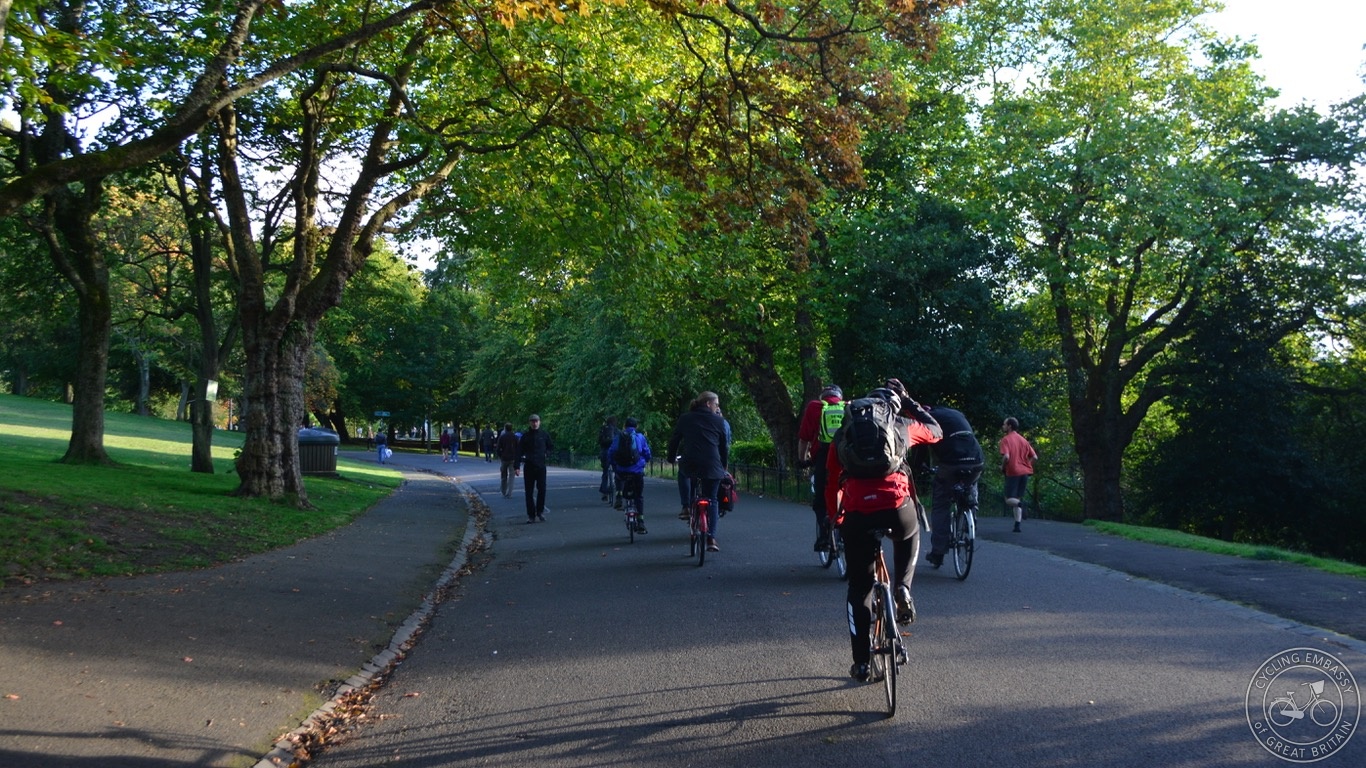
Perhaps this is a lesson for the Royal Parks in London, who seem to react to (alleged) conflict between walking and cycling on narrow paths by either attempting to ban cycling altogether, or to make it uncomfortable and difficult by adding rough surfaces and humps. The best answer is really just be to create more space (either shared, or separated) for everyone to get along happily.
From Kelvingrove Park, we headed back towards the city centre along another bi-directional cycleway, similar in quality and width to the one we used in the morning.
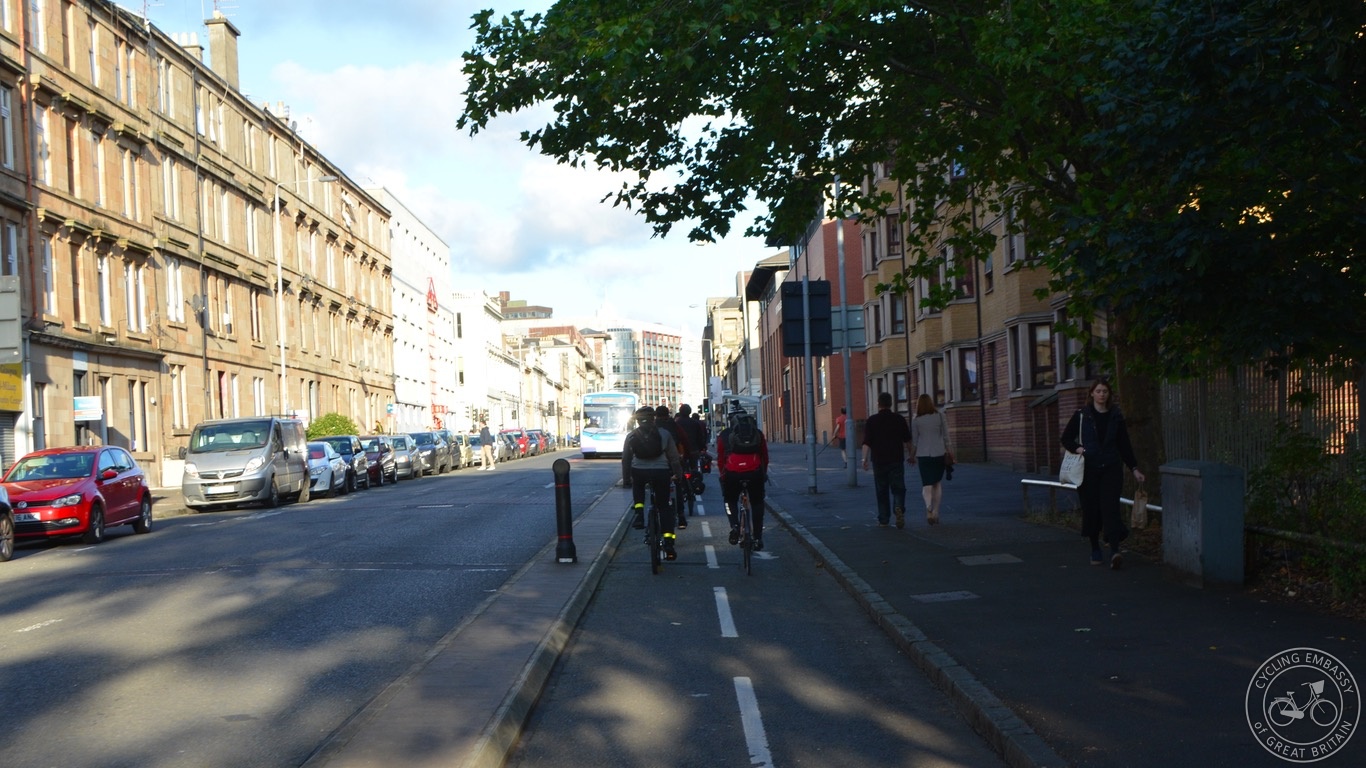
It's... okay, but again it could have been implemented much better. The surface is pretty poor, and it really should be much wider to accommodate safe two-way flow. It did seem to integrate into surrounding streets, though, and there was a nice example of a junction treatment on a road that was one-way for motor traffic, but two-way for cycling.
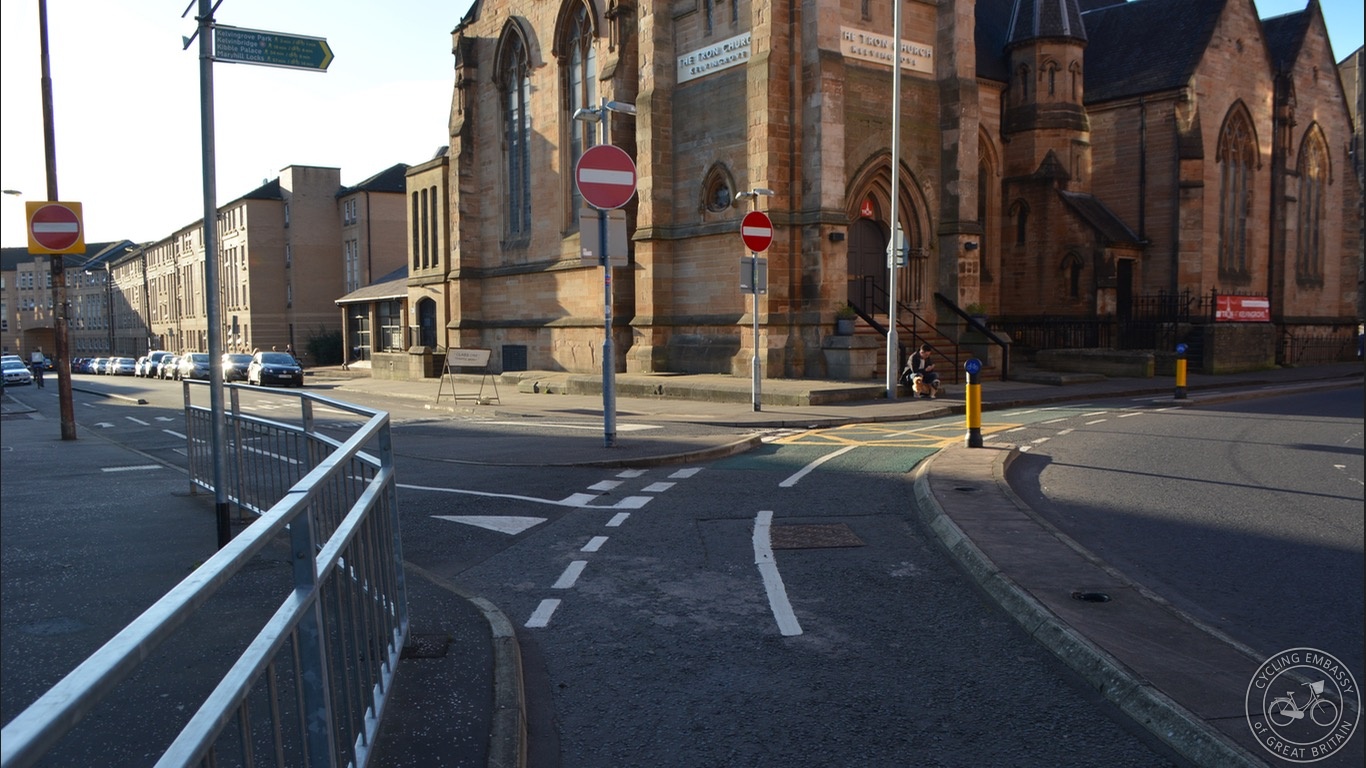
The bus stop bypasses weren't brilliant either - the shelter and waiting area should really be on the bus side of the cycleway, so people don't have to cross it at the last minute when the bus arrives - but there was at least an 'alighting island' (albeit a narrow one) for people to use when they get on and off the bus.
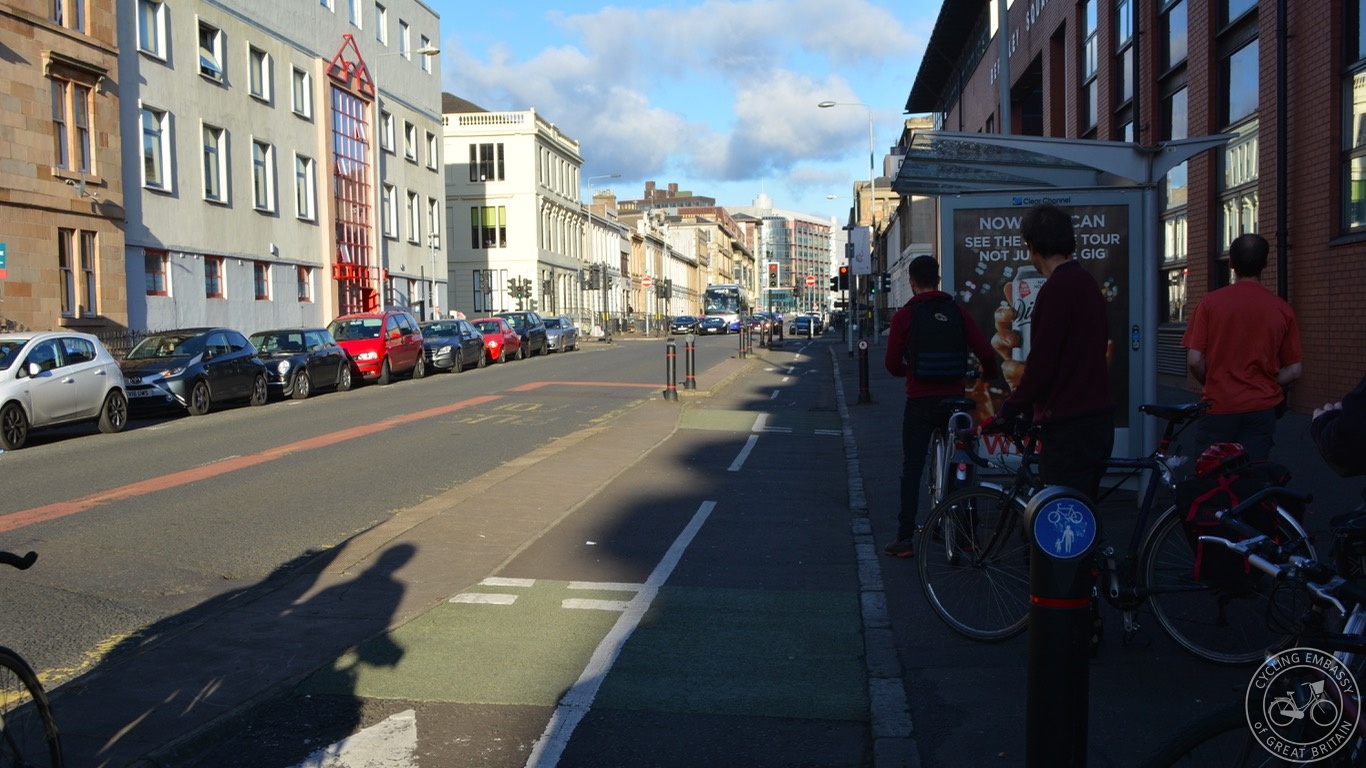
The other issues with this cycleway were some of the waiting times, which seemed inordinately long - several minutes, at one junction - and some of the junction treatments, which didn't seem particularly clear. Although motor traffic had 'give way' markings it felt like we were cycling straight off a footway into the road, which I think will create some unhelpful ambiguity about who should be giving way to who.
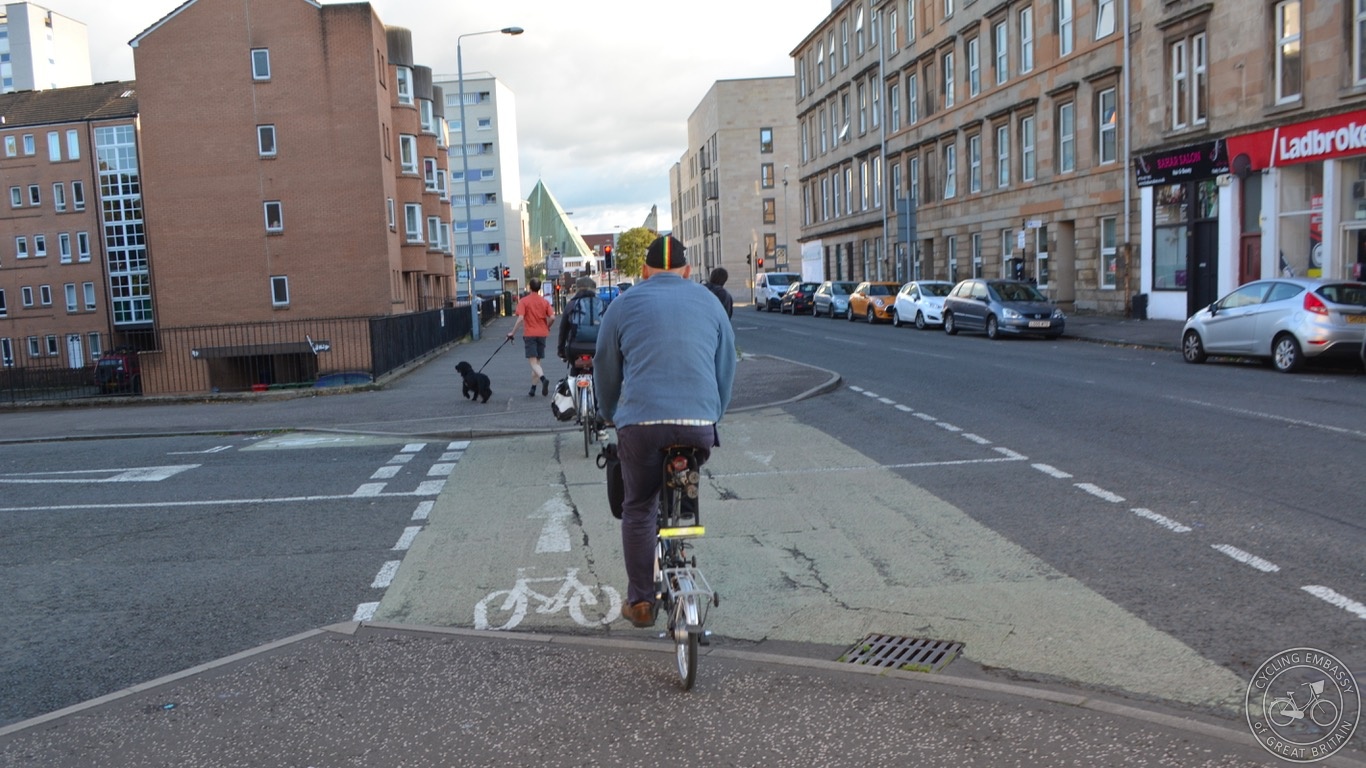
From this cycleway we proceeded down a quiet residential street to the infamous Bridge to Nowhere. This is a walking and cycling bridge across the M8 motorway, severing the city in two, that notoriously remained unfinished since the motorway was built in the 1970s. It was only finally completed (and therefore useful) in 2013.
While it's obviously good that the bridge is now complete, it isn't very easy to use. The western side has a steep spiral ramp that is pretty hard work, and involves a lot of height gain. This is because the motorway itself is already well above above ground level (it crosses the River Clyde on a high bridge) and the Bridge to Nowhere obviously has to cross the motorway at a decent height, on top of that. It's pretty hard work, and you aren't even rewarded with a good view - just an expanse of motorway and slip roads.

The noise (and pollution) is pretty awful - the road bridge is one the busiest in Europe, carrying around 150,000 vehicles a day - and from the bridge you can clearly see just how badly the motorway has affected the city, severing two communities. Amazingly this is only half a mile or so from the central station. It's hard to know how the problem of the motorway can be resolved - there has been talk of burying it, but that would obviously be hugely expensive.
The Bridge to Nowhere gradually descends down to street level on the eastern side - this is the newly-constructed section - before a toucan crossing allows access to a shared-use footway on the far side of the road, into the city centre. At least it would do, if it hadn't been closed to cycling, while some construction is taking place.
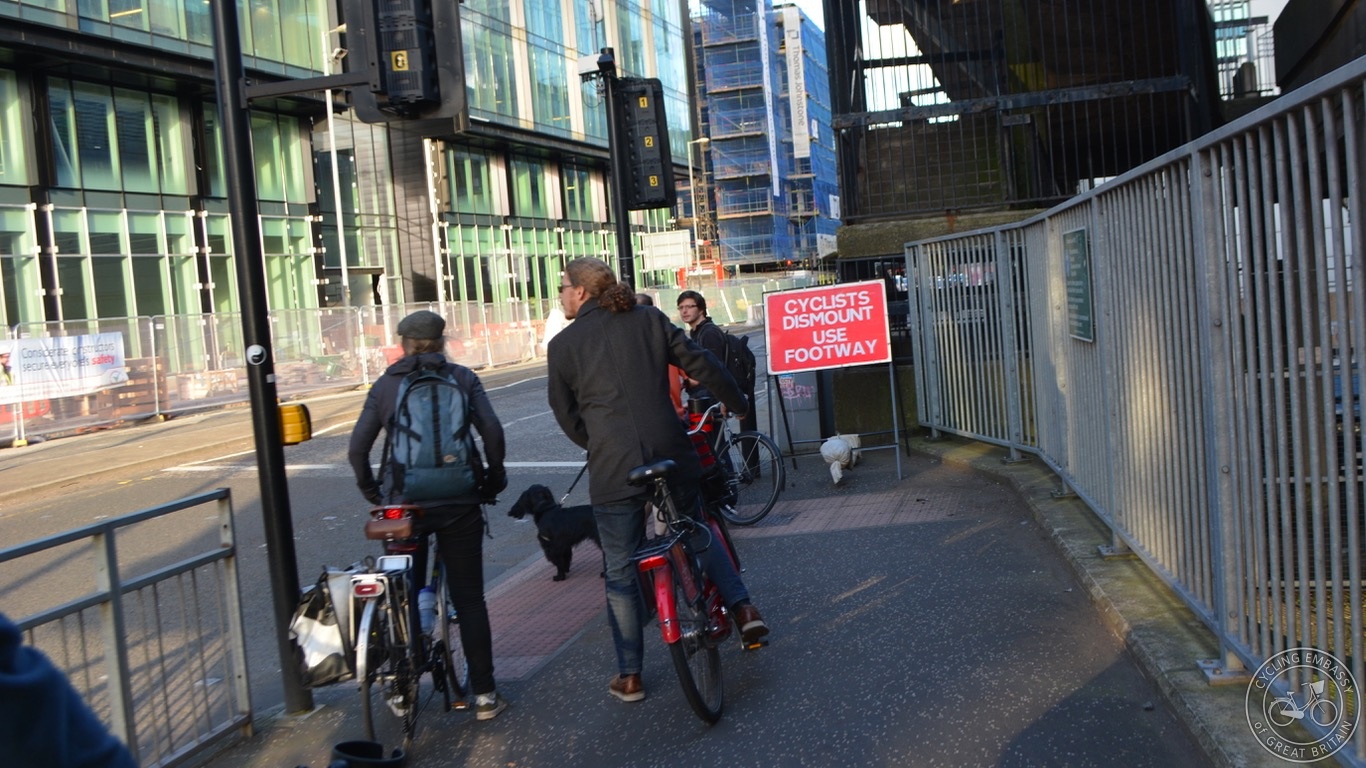
Needless to say, simply asking people to dismount isn't acceptable (one member of our party can't dismount at all, as his cycle is his mobility aid). Cycle routes should be continuous and maintained during construction work, rather than giving up and expecting people to walk instead.
The final part of our route back to Glasgow Central Station was on a two-way protected cycleway. Like the others we used in the city centre, it does the job - providing physical separation from motor traffic - but the width and surface quality definitely left a lot to be desired.

In the final, upcoming post we'll look at the third Infrastructure Safari, which took us north out of the city to Bearsden, and the Bears Way.
